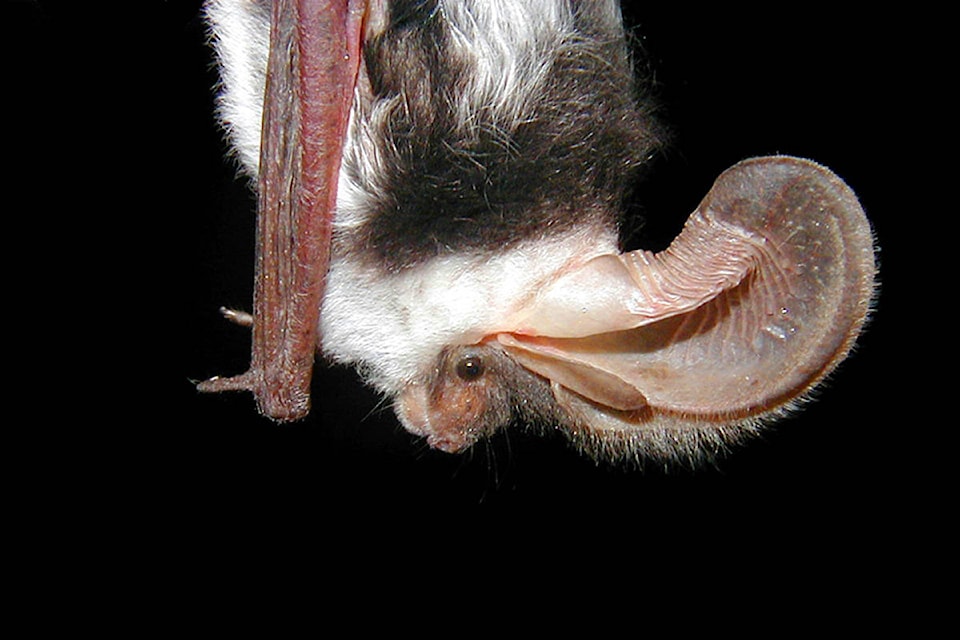B.C. bats do not have or spread the SARS-CoV-2 virus responsible for COVID-19, said Bill Gilroy with the BC Community Bat Program.
“The COVID-19 pandemic has shone a negative spotlight on bats, due to concerns over B.C. bats carrying the virus,” said Gilroy, who became the Cariboo-Chilcotin-Central Coast program co-ordinator this spring.
“Misinformation such as this can lead to unfounded fear and persecution of bats.”
Gilroy told Black Press Media he thinks the myth about bats causing the virus emerged early on during the pandemic based on information that was never clear from people wanting to place the blame on bats in China.
“Certainly here in B.C., it is absolutely unfounded,” he added. “There is no association at all with COVID-19 and bats. This information has been provided by health authorities to the B.C. Community Bats Program and we are responsibly relaying the information to the public.”
He invited people to support bats by participating in the annual B.C. bat count presently underway.
READ MORE: Public asked to help in reporting bat activity
For people who already have bat houses on their properties that are occupied, they are urged to visit the BC Community Bat Program website and register the bat house.
From the website residents can download forms that are used all over B.C. for the bat counts that follow specific protocol so everything is done in the same way to get valid and accurate information.
“We also work with volunteers who don’t have access to bat houses who might be interested in coming out and doing a bat count with us at one of the larger sites where we are monitoring bats.”
Gilroy and some volunteers have been doing bat counts this week and one night recently counted approximately 500 at one site and 250 at another site.
“It really is interesting,” Gilroy said.
“The larger colonies I just talked about are maternity colonies so these are only mothers and their young. The males roost separately. This is the time when the mothers are starting to have their babies.”
Most of the bats in the Cariboo Chilcotin are Little Brown Myotis, which are endangered in Canada.
He said bats are slow producers and only have one baby a year.
Little Brown Myotis bats have been known to live 30 or more years.
A little known fact is that the rarest bat in North America hangs out in cliffs above Williams Lake and Bull Canyon west in the Chilcotin.
“Those cliffs provide important habitat for Spotted Bats,” Gilroy explained. “They are spectacular. They have jet black fur, prominent white spots on their bodies and their ears are absolutely enormous. Their ears are almost as long as their body.”
The Spotted Bats nest singularly in crevices and cracks in the cliffs.
He has not seen one himself, but has talked to people that have, including Cathy Koot who was the Cariboo Chilcotin Central Coast program co-ordinator before him.
“We all know that bats used echo location to find their way around and find food,” Gilroy noted. “In most bats we cannot hear their echo location, but in these spotted bats we can. They are a unique and really beautiful bat.”
Williams Lake is at the northern limit of the Spotted Bat range in B.C.
Bat counts are best done at the exact time of sunset for one hour when it is 12C or warmer, not raining and during low wind speeds.
Finding places where bats are exiting structures, often old buildings on rural sites is the most ideal.
It is encouraging to see many homeowners and people in the ranching community being so enthusiastic about embracing bats and willing to put bat houses on their properties, he added.
“The work they do and the interest they have really does help us learn more about bats in B.C.”
Ideally, one to two counts are done between June 1 and 21 before bat pups are born, and one to two more counts between July 11 and Aug. 5 when pups are flying.
In 2019, the Annual Bat Count collected baseline data on bat populations at 337 sites across the province, and hopes to monitor these sites and more for 2020.
Gilroy said the count data helps bat biologists understand bat distribution and normal variation in colony sizes before bats face impacts from a devastating bat disease called White-nose Syndrome.
White-nose syndrome is an introduced fungal disease, fatal for bats but not for other animals or humans. Not yet identified in B.C., the disease continues to spread in Washington State, less than 200 kilometres from the Canadian border.
Results from the bat count may help prioritize areas in B.C. for research into treatment options and recovery actions.
Gilroy moved to Williams Lake in 2013 and worked as a school principal and teacher until he retired. For the last year and a half he has been working as the education co-ordinator for the Scout Island Nature Centre.
Anyone wanting to find out more about bat counts or white-nose syndrome, to report a dead bat, or to get assistance dealing with bat issues, should visit www.bcbats.ca or call 1-855-922-2287, extension 22 or e-mail cariboo@bcbats.ca.
READ MORE: Worried about bats? Here’s what to do if you come across one in B.C.
news@wltribune.com
Like us on Facebook and follow us on Twitter
